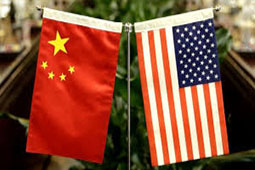
Viewpoint: Asia's ethanol market faces uncertainty


Leaders agreed to halt the escalation of the trade war for at least 90 days. The US will not proceed with a 25pc tariff on $200bn/yr of Chinese imports, which was scheduled to take effect on 1 January, and China will not retaliate with higher tariffs on US products.
In theory, the easing of trade tensions could spark renewed buying interest from China for US ethanol, but most market participants are cautiously optimistic. This uncertain demand outlook will affect buying and selling sentiment in 2019.
US ethanol import prices in China in June 2018 hit a high of 6,200-6,300 yuan/t ($902-916/t) — including a 45pc import duty and 16pc value-added tax — because of strong demand for US material. But the price fell to Yn5,300-5,500/t in December.
A closed arbitrage from the US to China for most of 2018 has prompted China to turn to alternative supply sources to meet some of its requirements. Chinese imports of ethanol from Malaysia surged in August and September. Other suppliers to China that export mainly denatured ethanol are Brazil, Peru, Costa Rica and South Korea.
China can continue to import ethanol from these non-traditional suppliers, but they do not have capacity like the US to supply huge volumes. The country will need around 218,000 b/d of ethanol by 2020 for its mandatory E10 gasoline blending.
In terms of supply, the problem of undercapacity persists. Some southeast Asian producers are slowly increasing their capacities, but they are unable to match growing demand.
The Philippines, which has been strictly enforcing a 10pc blending mandate for gasoline since 2011, remains short of supplies. The country imported around 2.87mn l of denatured ethanol in 2017 compared with 2.6mn l during the previous year, according to data from the Philippines energy department. Domestic ethanol producers can supply only around 60pc of the country's overall requirements because of feedstock constraints, with the rest imported from the US, Brazil and Pakistan.
Demand in the Philippines during the first few months of 2019 is expected to be modestly higher because of its domestic ethanol allocation programme, which requires fuel distributors to purchase a fixed monthly amount from domestic producers before they can purchase imported product.
The Philippines energy department has allocated around 91,000m³ of domestic ethanol to oil companies for the first quarter of 2019, around 12pc lower than the fourth quarter of 2018. But this is 20pc higher from the same period a year earlier, which means that the country's demand for imported fuel-grade ethanol is expected to be lower in the first quarter of 2019.


Trump weighs using $2 billion in CHIPS Act funding for critical minerals

Codelco cuts 2025 copper forecast after El Teniente mine collapse

Electra converts debt, launches $30M raise to jumpstart stalled cobalt refinery

Barrick’s Reko Diq in line for $410M ADB backing

Abcourt readies Sleeping Giant mill to pour first gold since 2014

Nevada army depot to serve as base for first US strategic minerals stockpile

SQM boosts lithium supply plans as prices flick higher

Viridis unveils 200Mt initial reserve for Brazil rare earth project

Tailings could meet much of US critical mineral demand – study

Kyrgyzstan kicks off underground gold mining at Kumtor

Kyrgyzstan kicks off underground gold mining at Kumtor

KoBold Metals granted lithium exploration rights in Congo

Freeport Indonesia to wrap up Gresik plant repairs by early September

Energy Fuels soars on Vulcan Elements partnership

Northern Dynasty sticks to proposal in battle to lift Pebble mine veto

Giustra-backed mining firm teams up with informal miners in Colombia

Critical Metals signs agreement to supply rare earth to US government-funded facility

China extends rare earth controls to imported material

Galan Lithium proceeds with $13M financing for Argentina project

Kyrgyzstan kicks off underground gold mining at Kumtor

Freeport Indonesia to wrap up Gresik plant repairs by early September

Energy Fuels soars on Vulcan Elements partnership

Northern Dynasty sticks to proposal in battle to lift Pebble mine veto

Giustra-backed mining firm teams up with informal miners in Colombia

Critical Metals signs agreement to supply rare earth to US government-funded facility

China extends rare earth controls to imported material

Galan Lithium proceeds with $13M financing for Argentina project

Silver price touches $39 as market weighs rate cut outlook

















